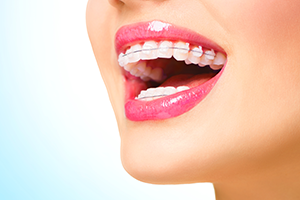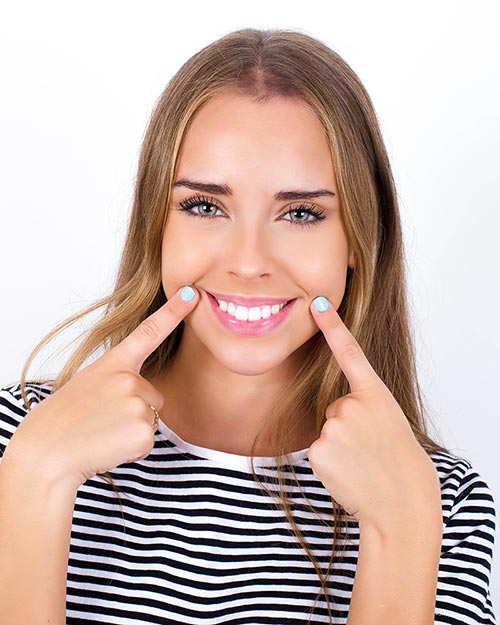- BOOK AN APPOINTMENT
-
Contact us on:Tel: 091 565 068
Email:
Fixed Braces
There are many different types of braces to choose from:
Metal Braces
 Metal are made from stainless steel braces are the most popular braces worn by children. They are worn on the front surface of the teeth, are easy to fit and comfortable to wear.
Metal are made from stainless steel braces are the most popular braces worn by children. They are worn on the front surface of the teeth, are easy to fit and comfortable to wear.Many adults still have painful memories of the big clunky braces from the past. Luckily, times have changed, and so have metal braces. Modern braces are smaller and more comfortable than ever before new technologies.
Children and teenagers love them as they can have coloured elastics to tie in the arch wires. These metal braces are fashionable and fun and make orthodontic treatment less of a chore for the young!
Ceramic Braces
 Ceramic braces give you a lot to smile about. Made from a translucent ceramic material, these braces offer comfort and help make your brace less noticeable.
Ceramic braces give you a lot to smile about. Made from a translucent ceramic material, these braces offer comfort and help make your brace less noticeable.Ceramic braces are a popular choice for teens and adults who want to make a less noticeable statement during treatment.
These braces are fitted to the front surfaces of your teeth and positioned to gain optimal movement creating a long lasting, confident smile for every patient.
What is orthodontics?
Orthodontics is the branch of dentistry which specializes in the treatment of alignment in teeth and jaws.
What is an orthodontist?
An orthodontist is a qualified dentist who has then spent at least 3 more years of additional training to become a expert in using braces.
When should my child have braces?
Usually children are fitted with braces when all of their adult teeth are through. This is usually between the ages of 10-14. Most orthodontists recommend bringing your child to the orthodontist for a first check-up at about 10 years of age as some problems are treated simply at this age (interceptive treatment) without the need for more complicated treatment later.
Who is suitable?
Anyone who has healthy teeth and gums is suitable for treatment.
What does treatment cost?
Prices depends on the type of brace being used (metal/ ceramic) and on whether the top and bottom teeth need treatment. For fixed braces, prices start at 2500. You will be given a quote at your consultation.
Will treatment be uncomfortable?
Having the brace fitted does not cause any discomfort; but later on that day and for the next few days, your teeth can ache a little. The brace can rub on the inside of the mouth and may cause ulcers. You will be given advice on how to manage these symptoms. Any pain or discomfort usually settles after a few days.
How long does treatment last?
This depends on how complicated your problems are to start with. Certain interceptive treatments in young children can be treated in 6 months. For the majority of patients, their treatment last between 1-2 years. More complicated treatment may take up to 3 years, although this is rare.
How often will I need appointments?
Usually between 4-8 weeks, depending on the stage of treatment you are at. Appointments are available in the evenings and on Saturdays to avoid having to take time off work or school.
Will my teeth move after treatment?
Yes – if you do not wear your retainers. This is why everyone has retainers fitted at the end of their treatment to stop your teeth moving. Retainers can be removable clear gumshields, or fixed in place behind the front teeth. Your orthodontist can advise you on the best type for you.

Book a Free Braces or Invisalign Consultation*
Copyright © Quay Dental 2025. All rights reserved.
Quay Dental is a trading name of Xeon Dental Services Limited.
Registered in Ireland. Registered number 391309.
Registered address: St Martins House, Waterloo Road, Ballsbridge, Dublin 4, Ireland.
Directors: Mark Allan – British, Gavin Beasley - Irish, Steven O’Brien - British.
Privacy Policy | Cookie Settings | Sitemap | Accessibility | Facility Finder

